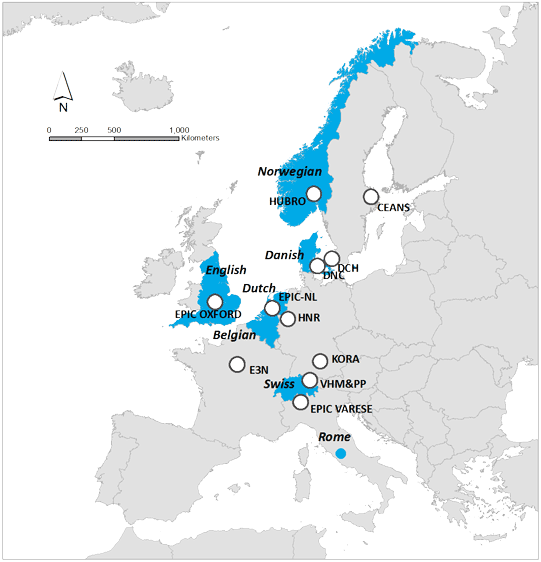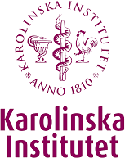ELAPSE Project
ELAPSE (Effects of Low-Level Air Pollution: A Study in Europe) is a Europe-wide collaboration in a research project Mortality and morbidity effects of long-term exposure to low-level PM2.5, Black Carbon, NO2 and O3: an analysis of European cohorts. The Project is funded by Health Effects Institute under the RFA 14-3: Assessing Health Effects of Long-term Exposure to Low Levels of Ambient Air Pollution and runs from mid-2016 to mid-2019.
The Project addresses the issue of health effects at low air pollution levels by performing targeted analyses of all-cause and cause-specific mortality and morbidity endpoints within selected cohorts of the ESCAPE study with detailed individual data (~380,000 subjects) and in seven very large European administrative cohorts (> 35 million subjects). The analysis focuses on the pollutants PM2.5 (fine particles with an aerodynamic diameter of less than 2.5 μm), nitrogen dioxide (NO2), and ozone (O3), but also exploits the rich monitoring data of black carbon (BC) available from the ESCAPE study with high spatial resolution. Exposure assessment characterizes fine-scale intra-urban as well as between-urban air pollution contrasts using novel combinations of land use regression and dispersion models, routine monitoring data, and satellite observations.
Rationale
Epidemiological cohort studies have consistently found associations between long-term exposure to outdoor air pollution and a range of morbidity and mortality endpoints. Recent evaluations by the World Health Organization and the Global Burden of Disease study have suggested that these associations may be non-linear, and persist at very low concentrations. However, uncertainty about the shape of the concentration-response function exists especially for the low and high ends of the concentration distribution, which is partly related to the scarcity of observations, particularly in the low range. In this study we focus on analyses contributing to knowledge about health effects of spatially resolved air pollution concentrations at low concentrations, defined as less than current EU, EPA, and WHO Limit Values or guidelines for PM2.5, NO2, and O3. Studies have focused especially on PM2.5, but increasingly associations with O3 and NO2 are reported, for NO2 particularly in studies that accounted for its fine spatial scale variation. Very few studies have evaluated long-term morbidity and mortality effects of O3.
Objectives
The main hypothesis we will investigate is that long-term exposure to low concentrations of outdoor air pollution is related to adverse health effects. We will define ‘low’ using various cut-points defined by current EU, US and WHO limit values, air quality standards and guidelines, respectively. We will specifically test whether the concentration-response functions deviate significantly from linearity at low exposures. We will exploit selected well-characterized cohorts from the ESCAPE study and seven large European administrative cohorts to study health effects of low level air pollution.
The specific objectives are:
Study design
We address the health effects at low air pollution levels by performing new analyses within selected cohorts of the ESCAPE study (~485,000 subjects) and in seven very large European administrative cohorts (> 35 million subjects).
By combining well-characterized ESCAPE cohorts and large administrative cohorts in one proposal the strengths and weaknesses of each approach can be adequately addressed. The large administrative cohorts have more statistical power, can efficiently control for area-level confounders, but have fewer possibilities to control for individual-level confounders. The ESCAPE cohorts have detailed information on individual confounders available.
Participating cohorts are:
| Cohort | Study area | Population size | |
| ESCAPE cohorts | |||
|---|---|---|---|
| CEANS | Stockholm county | 22,200 | |
| DCH | Copenhagen | 56,500 | |
| EPIC-NL | Four Dutch cities | 40,000 | |
| EPIC OXFORD | UK wide | 55,300 | |
| EPIC VARESE | Varese | 9,900 | |
| E3N | France wide | 53,500 | |
| HNR | Ruhr area | 4,800 | |
| HUBRO | Oslo | 18,100 | |
| KORA | Augsburg | 9,100 | |
| VHM&PP | Vorarlberg region | 185,300 | |
| DNC | Denmark wide | 28,700 | |
| Administrative cohorts | |||
| Belgian | National | 10,000,000 | |
| Danish | National | 5,600,000 | |
| Dutch | National | 7,200,000 | |
| English | National | 850,000 | |
| Norwegian | National | 2,800,000 | |
| Rome | Rome | 1,300,000 | |
| Swiss | National | 7,600,000 | |

Project partners
Publications
HEI report
Mortality and Morbidity Effects of Long-Term Exposure to Low-Level PM2.5, BC, NO2, and O3: An Analysis of European Cohorts in the ELAPSE Project
HEI Research Report 208
Health effects
Long-Term Exposure to Fine Particle Elemental Components and Mortality in Europe: Results From Six European Administrative Cohorts Within the ELAPSE Project
Science of the Total Environment; 809:152205
Variability in the Association Between Long-Term Exposure to Ambient Air Pollution and Mortality by Exposure Assessment Method and Covariate Adjustment: A Census-Based Country-Wide Cohort Study
Science of the Total Environment; 804:150091
Long-Term Exposure to Low Ambient Air Pollution Concentrations and Mortality Among 28 Million People: Results From Seven Large European Cohorts Within the ELAPSE Project
The Lancet Planetary Health; 6:e9-18
Long-Term Exposure to Air Pollution and Liver Cancer Incidence in Six European Cohorts
International Journal of Cancer; 149:1887-97
Long-Term Exposure to Low-Level Ambient Air Pollution and Incidence of Stroke and Coronary Heart Disease: A Pooled Analysis of Six European Cohorts Within the ELAPSE Project
The Lancet Planetary Health; 5:e620–32
Long Term Exposure to Low Level Air Pollution and Mortality in Eight European Cohorts Within the ELAPSE Project: Pooled Analysis
BMJ; 374:n1904
Long-Term Exposure to Fine Particle Elemental Components and Natural and Cause-Specific Mortality - A Pooled Analysis of Eight European Cohorts Within the ELAPSE Project
Environmental Health Perspectives; 129:47009
Comparison of Associations Between Mortality and Air Pollution Exposure Estimated with a Hybrid, a Land-Use Regression and a Dispersion Model
Environment International; 146:106306
Long-Term Exposure to Low-Level Air Pollution and Incidence of Asthma: The ELAPSE Project
European Respiratory Journal; 57:2003099
Long-Term Exposure to Fine Particle Elemental Components and Lung Cancer Incidence in the ELAPSE Pooled Cohort
Environmental Research; 193:110568
Long-Term Exposure to Low-Level Air Pollution and Incidence of Chronic Obstructive Pulmonary Disease: The ELAPSE Project
Environment International; 146:106267
Long-Term Low-Level Ambient Air Pollution Exposure and Risk of Lung Cancer – A Pooled Analysis of 7 European Cohorts
Environment International; 146:106249
Statistical methods
Modeling Multi-Level Survival Data in Multi-Center Epidemiological Cohort Studies: Applications From the ELAPSE Project
Environment International; 147:106371
Exposure assessment
Development of Europe-Wide Models for Particle Elemental Composition Using Supervised Linear Regression and Random Forest
Environmental Science & Technology; 54:15698-15709
A Comparison of Linear Regression, Regularization, and Machine Learning Algorithms to Develop Europe-Wide Spatial Models of Fine Particles and Nitrogen Dioxide
Environment International; 130:104934
Spatial PM2.5, NO2, O3 and BC Models for Western Europe – Evaluation of Spatiotemporal Stability
Environment International; 120:81-92
Contact
-
Gerard Hoek, PhD
Institute for Risk Assessment Sciences (IRAS)
Utrecht University -
PO Box 80178
3508 TD Utrecht
The Netherlands - g.hoek@uu.nl
- elapse_project





















